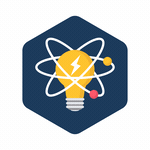Leveraging Customer Insights to Understand B2B Market Challenges
-
Bella Williams
- 10 min read

 The power of customer insights cannot be overemphasised. Qualitative insights reveal the motivations behind customer behaviors, opinions, desires, and expectations. Unlike its data-driven counterpart, quantitative insights, qualitative insights use loose frameworks with open-ended questions that allow respondents to talk freely about various issues. To build a successful product, understanding your customers is more important than ever. And that’s where customer insights for segmentation comes in – it’s like a roadmap that helps companies figure out how to connect with different types of customers. To read more about customer segmentation, check out previous posts.
The power of customer insights cannot be overemphasised. Qualitative insights reveal the motivations behind customer behaviors, opinions, desires, and expectations. Unlike its data-driven counterpart, quantitative insights, qualitative insights use loose frameworks with open-ended questions that allow respondents to talk freely about various issues. To build a successful product, understanding your customers is more important than ever. And that’s where customer insights for segmentation comes in – it’s like a roadmap that helps companies figure out how to connect with different types of customers. To read more about customer segmentation, check out previous posts.
But here’s the twist: it’s not just about numbers and graphs. It’s about really understanding what makes your customers tick – what they like, what they want, and even how they feel. Imagine it like getting to know a new friend – you want to know more than just their name; you want to understand their personality and what makes them unique.
Leveraging customer insights to understand market challenges for different segments is a crucial strategy for businesses looking to thrive. By deeply understanding the needs, preferences, behaviors, and pain points of specific customer segments, companies can tailor their products, services, and marketing efforts to effectively address these challenges.
Using Customer Insights to Understand Market Challenges for Segments
When it comes to comprehending market challenges, a substantial portion of the process entails qualitative endeavors. This involves delving into the intricacies of the market environment, aspirations of potential customers, and the contextual backdrop of their circumstances.
This critical undertaking shapes the nature of interactions with customers and forms the foundation for cultivating a deep understanding of their issues. This understanding, in turn, allows both marketing and product teams to develop a fervor for addressing their problems and devising effective solutions.
However, the exploration of market problems should not be limited to qualitative exploration alone. It is imperative to blend this qualitative insight with quantitative elements. Without translating your qualitative observations into data-driven factors, marketing teams might struggle to persuade other stakeholders within the organization to take actionable steps based on their insights.
This amalgamation of qualitative and quantitative aspects is what adds complexity to the task of uncovering and comprehending market problems fr different segments. Teams embark on a predominantly qualitative pursuit, often engaging in conversations with customers. The knowledge gained from these interactions is unstructured and experiential by nature. Hence the need for indepth analysis and segmentation.
Here’s a step-by-step approach to leveraging customer insights for understanding market challenges for different segments:
- Segmentation and Targeting:
- Identify and define your customer segments based on relevant characteristics such as demographics, psychographics, behaviors, and needs.
- Prioritize segments based on their potential value and alignment with your business goals.
- Data Collection:
- Gather both qualitative and quantitative data from various sources, including surveys, interviews, social media, online reviews, and sales data.
- Use analytics tools to track customer interactions and behaviors on your website, app, or other touchpoints.
- Persona Development:
- Create detailed customer personas for each segment, including their motivations, pain points, challenges, goals, and preferred communication channels.
- Personas provide a humanized representation of your target customers, making it easier to empathize and strategize.
- Customer Journey Mapping:
- Map out the end-to-end customer journey for each segment, identifying touchpoints, interactions, and pain points they experience during their interactions with your brand.
- This helps you pinpoint specific moments where challenges arise and opportunities for improvement exist.
- Data Analysis:
- Analyze the collected data with tools like Insight7 to identify patterns, trends, and common challenges faced by each segment.
- Look for insights that reveal the root causes of these challenges, whether they’re related to product functionality, customer service, pricing, or other factors.
- Competitor Analysis:
- Compare your findings with your competitors’ strategies to gain a holistic view of the market landscape and potential challenges your segments might encounter across different brands.
- Feedback and Surveys:
- Engage with your customers through regular feedback surveys, focus groups, or online communities to gather ongoing insights and validate your findings.
- Actively listen to customer feedback to stay attuned to evolving challenges and preferences.
- Iterative Strategy Development:
- Develop tailored strategies for each segment based on the insights you’ve gathered. These strategies could involve product improvements, marketing campaigns, customer support enhancements, or pricing adjustments.
- Continuously iterate and refine your strategies based on new insights and changing market dynamics.
- Implementation and Monitoring:
- Implement your strategies and closely monitor their impact on addressing the identified challenges.
- Track KPIs related to customer satisfaction, retention, conversion rates, and revenue growth.
- Continuous Learning:
- Keep the process of collecting and analyzing customer insights ongoing. Markets and customer preferences evolve, so maintaining a pulse on customer needs is vital for long-term success.
Remember, the goal is to create a customer-centric approach that not only addresses market challenges but also delights your customers, fostering long-term relationships and sustainable business growth.
Common Pitfalls in Understanding Market Challenges for Different Customer Segments
Fixating on Short-Term Revenue: If the initiative, even if endorsed by leadership, is primarily aimed at resolving short-term revenue issues, navigating these waters becomes exceedingly challenging. In such cases, it is essential to advocate for a more realistic outlook. Look at market trends. Work with past data and future projections.
Excessive Focus on Existing Customers: While working extensively with existing customers can contribute to sustaining current revenue and building loyalty, it might not necessarily lead to true market discovery. For uncovering new opportunities or establishing a foothold in an adjacent market, a different approach is required. Delve into new segments to discover new opportunities.
Chasing Competitors: Responding to competitive pressures is legitimate, but engaging in long-term strategic activities solely as a defensive measure against competitors can divert focus from the core market discovery process. Instead, stay focused on the needs of each segment within your target market.
Innovation as the Leading Driver: While innovation is integral to the market research process, it should not take precedence over understanding customer needs. The primary focus should remain on identifying and solving problems, rather than being solely driven by technological advancements.
Market Problem Identification
Market Problems are reflections of challenges, frustrations, and unmet needs that resonate with the entire customer base. These issues must be tangible and measurable in nature.
Unlike explicit statements, market problems are often implied. Customers, whether existing or non-customers, tend to articulate their discontent with current solutions rather than explicitly stating what they’re seeking. It falls upon markwet and product teams to delve deeper, asking probing questions to decipher the true meaning behind their sentiments.
An essential aspect of this process is identifying the emotional attachment associated with these problems. Emotional frustration often indicates an intrinsic value in addressing the issue.
Once a problem is identified, the next step is quantifying it. This quantification should not be solely focused on organizational financial gains; rather, it should translate into a tangible benefit for the individual customer in each segment.
Furthermore, when evaluating market problems, it’s crucial to consider various options, including the possibility of not taking any action. Sometimes, the most effective solution might be to leave a problem unsolved, especially if the market demand for a solution isn’t substantial. That is why teams should pay attention to insights from each customer segment.
Enhancing Precision with Personas
The utilization of personas serves as a strategic tool to gain a deeper understanding of customers’ perspectives and aspirations. The purpose behind exploring market problems isn’t merely to create innovative solutions; it’s about addressing the genuine needs and desires of customers. So you’re asking questions like “What are our customers saying based on industry, size, revenue, etc”. “Who are the clients that fall under these segments?”
Personas enable you to center your focus on understanding where customers currently stand and where they aspire to be. The solutions you develop should serve as pathways that bridge this gap. In essence, the focus shifts from the company’s standpoint to the customer’s journey.
Market Discovery
Market discovery is an ongoing process fueled by qualitative research methods that aim to identify opportunities within the market through interactions with the entire customer base. This involves conducting in-depth interviews, organizing focus groups, and similar approaches.
Early feedback in this process often contains noise and might not provide definitive answers. Relying on a single source of information might lead to incomplete insights. Therefore, collecting data from multiple sources is essential.
These interactions go beyond mere transactions; they involve building relationships that contribute to shaping the solutions we design. Since these relationships evolve over time, revisiting and refining assumptions through repeated interactions is valuable.
Ultimately, the insights and information gleaned from these interactions must be structured into a narrative that resonates with the entire organization.







